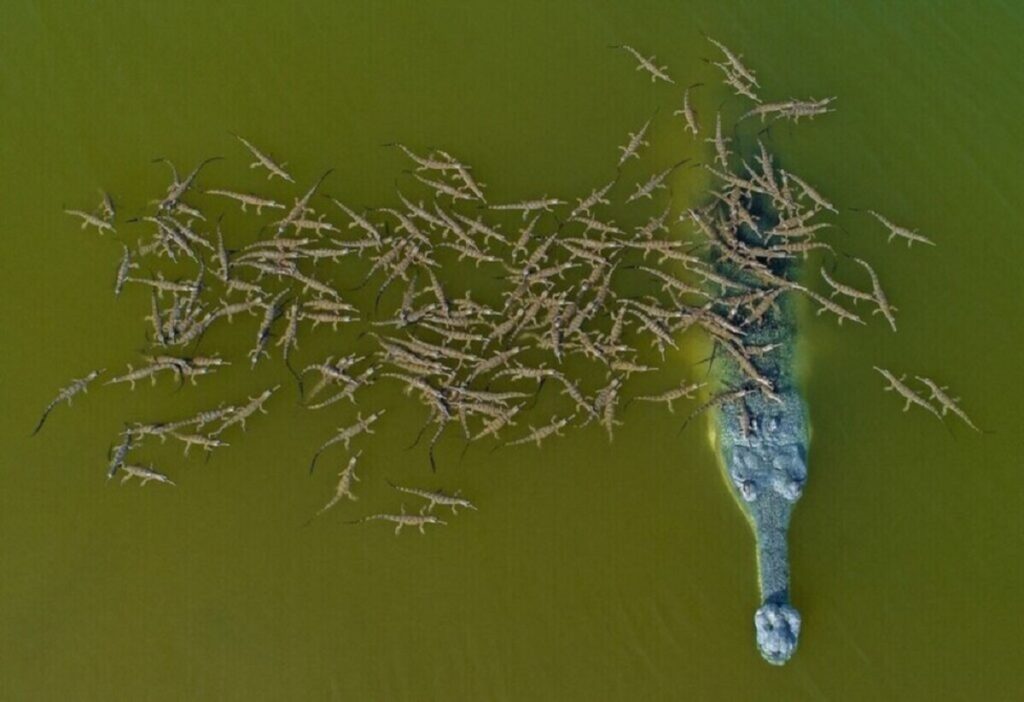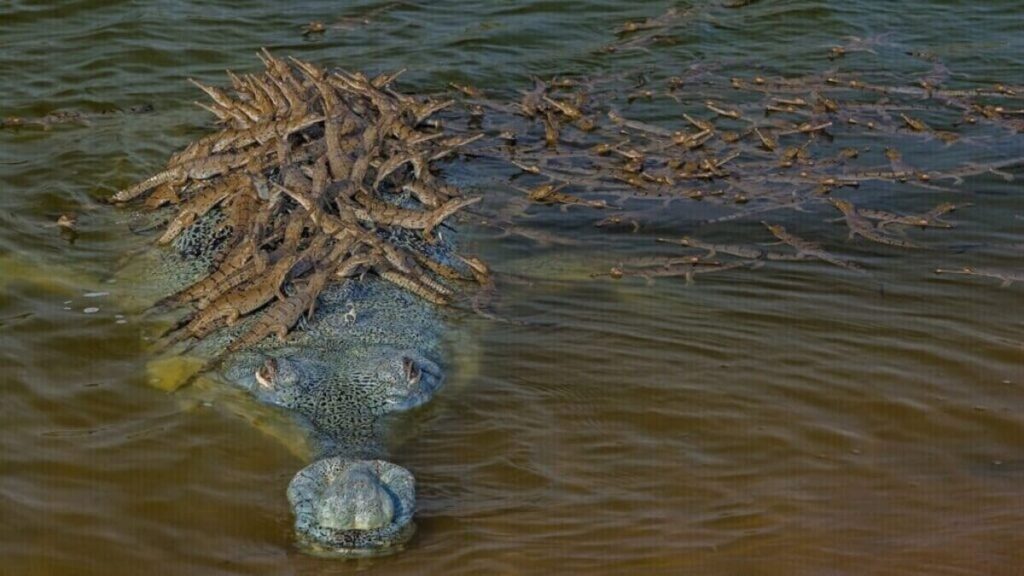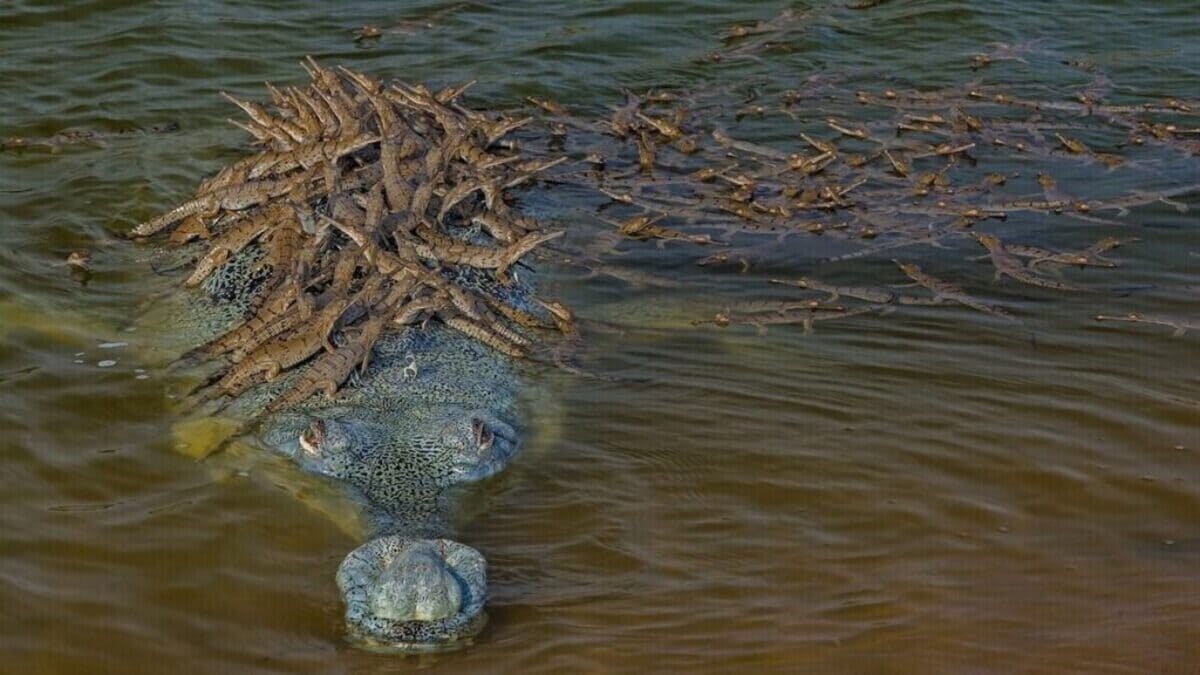Every so often, an image from the natural world sweeps across the internet and stops us in our tracks. Not because it is dramatic or frightening, but because it reveals a slice of life so extraordinary that it feels almost mythical. That is exactly what happened when a breathtaking photograph of a giant male crocodile ferrying around nearly 100 hatchlings on his back made its way online — a moment so surreal it could have been lifted from a fantasy novel.
A rare spectacle on a sacred river
The scene unfolded along the Ganges, a river celebrated for its cultural and ecological significance. It is also home to one of the world’s most endangered reptiles: the gharial, instantly recognisable by its slender snout and delicate array of needle sharp teeth. Photographer Dhritiman Mukherjee spent weeks blending into the riverside environment, waiting for a moment that would capture the species’ fragile place in the natural world.
His patience paid off. Through his lens emerged the astonishing sight of a massive male gharial gliding through the water with dozens upon dozens of tiny offspring perched confidently on his back. Far from a rare whim, this is actually a clever adaptation. Unlike other crocodilians, gharials cannot carry their young in their mouths — their narrow jaws make it impossible — so they rely on their broad backs as a safe place for hatchlings to cling to as they navigate the currents.
A father’s quiet but vital duty
Paternal care on this scale is not just touching; it is a lifeline. Gharials are critically endangered, with roughly 650 adults left in the wild, according to conservation estimates shared by experts such as Patrick Campbell from the Natural History Museum. Every young gharial that reaches adulthood represents a hard won conservation victory.
The Chambal River, home to the species’ largest remaining population — around 500 individuals — has become one of their last strongholds. Here, threats such as habitat loss, illegal sand mining and reduced fish stocks mean that the survival of each clutch of hatchlings is essential. A vigilant father, even one carrying an entire nursery on his back, is a powerful symbol of that fight.

Capturing the soul of a river
Mukherjee’s photograph resonates far beyond its technical brilliance. Awarded top honours in a Natural History Museum competition and shortlisted for Wildlife Photographer of the Year, it invites viewers to look more closely at a species many will never see in person.
What stands out is not just the spectacle, but the serenity — a huge reptile moving with delicate purpose, tiny heads peeking over his massive spine, a quiet bond unfolding in the middle of a sacred waterway. It is an intimate portrait of resilience, and of a father doing everything he can to shield the next generation.
For anyone who cares about wildlife, climate or conservation, this image carries a message about responsibility and hope. The gharial’s struggle mirrors broader challenges faced by endangered species worldwide, reminding us that even the most ancient creatures rely on modern protection.
A reminder of what is worth saving

In a world constantly buzzing with noise and distraction, moments like this have the rare ability to make us pause. A single photograph — one reptile, one river, one hundred tiny passengers — becomes a window into the resilience of life and the urgency of conservation.
Mukherjee’s extraordinary image shows us that fatherhood is not exclusive to humans, that survival is a shared endeavour and that nature, when given the chance, still writes the most astonishing stories.
And sometimes, all it takes to remind us is the sight of a devoted parent carrying his entire future on his back.

